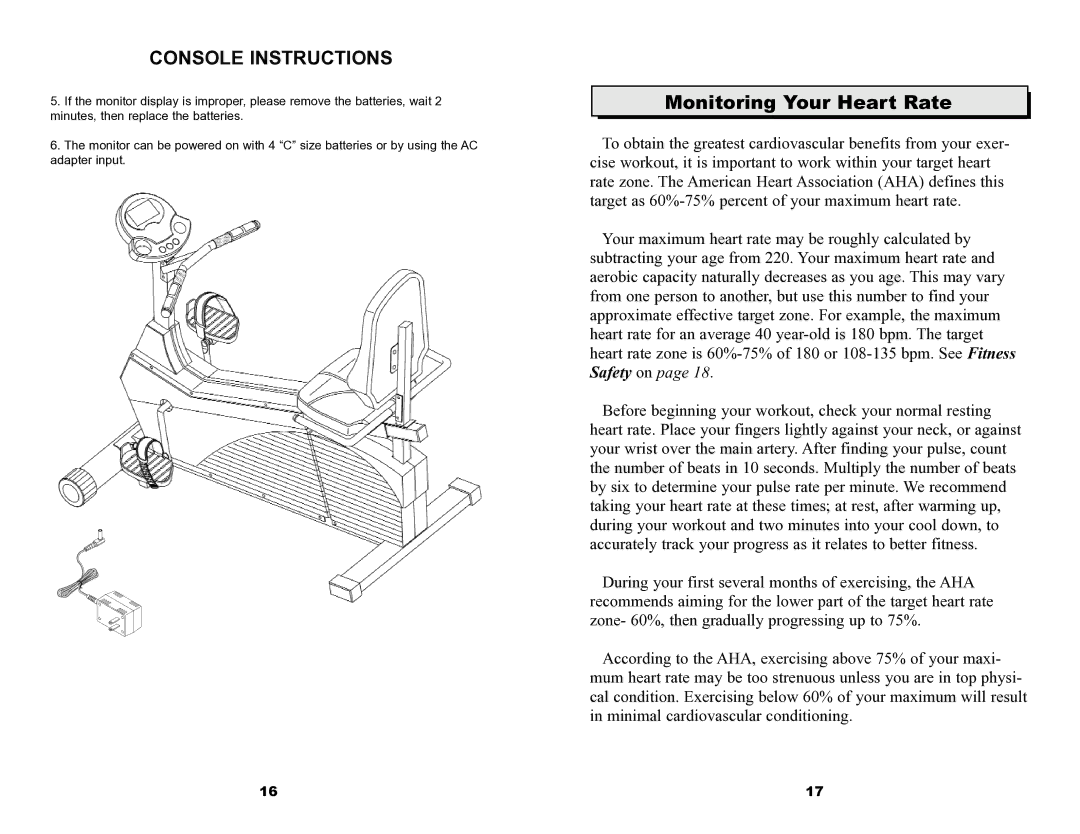
CONSOLE INSTRUCTIONS
5.If the monitor display is improper, please remove the batteries, wait 2 minutes, then replace the batteries.
6.The monitor can be powered on with 4 “C” size batteries or by using the AC adapter input.
Monitoring Your Heart Rate
To obtain the greatest cardiovascular benefits from your exer- cise workout, it is important to work within your target heart rate zone. The American Heart Association (AHA) defines this target as
Your maximum heart rate may be roughly calculated by subtracting your age from 220. Your maximum heart rate and aerobic capacity naturally decreases as you age. This may vary from one person to another, but use this number to find your approximate effective target zone. For example, the maximum heart rate for an average 40
Before beginning your workout, check your normal resting heart rate. Place your fingers lightly against your neck, or against your wrist over the main artery. After finding your pulse, count the number of beats in 10 seconds. Multiply the number of beats by six to determine your pulse rate per minute. We recommend taking your heart rate at these times; at rest, after warming up, during your workout and two minutes into your cool down, to accurately track your progress as it relates to better fitness.
During your first several months of exercising, the AHA recommends aiming for the lower part of the target heart rate zone- 60%, then gradually progressing up to 75%.
According to the AHA, exercising above 75% of your maxi- mum heart rate may be too strenuous unless you are in top physi- cal condition. Exercising below 60% of your maximum will result in minimal cardiovascular conditioning.
16 | 17 |
